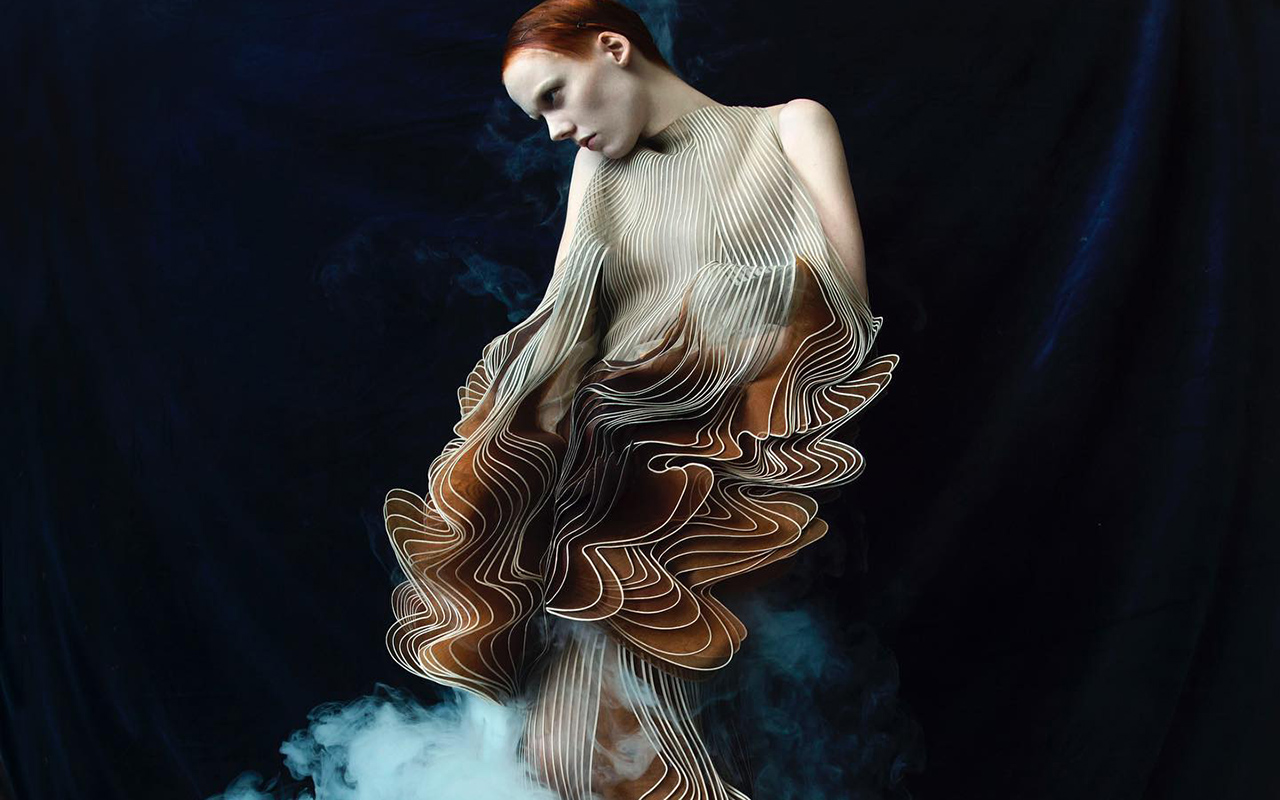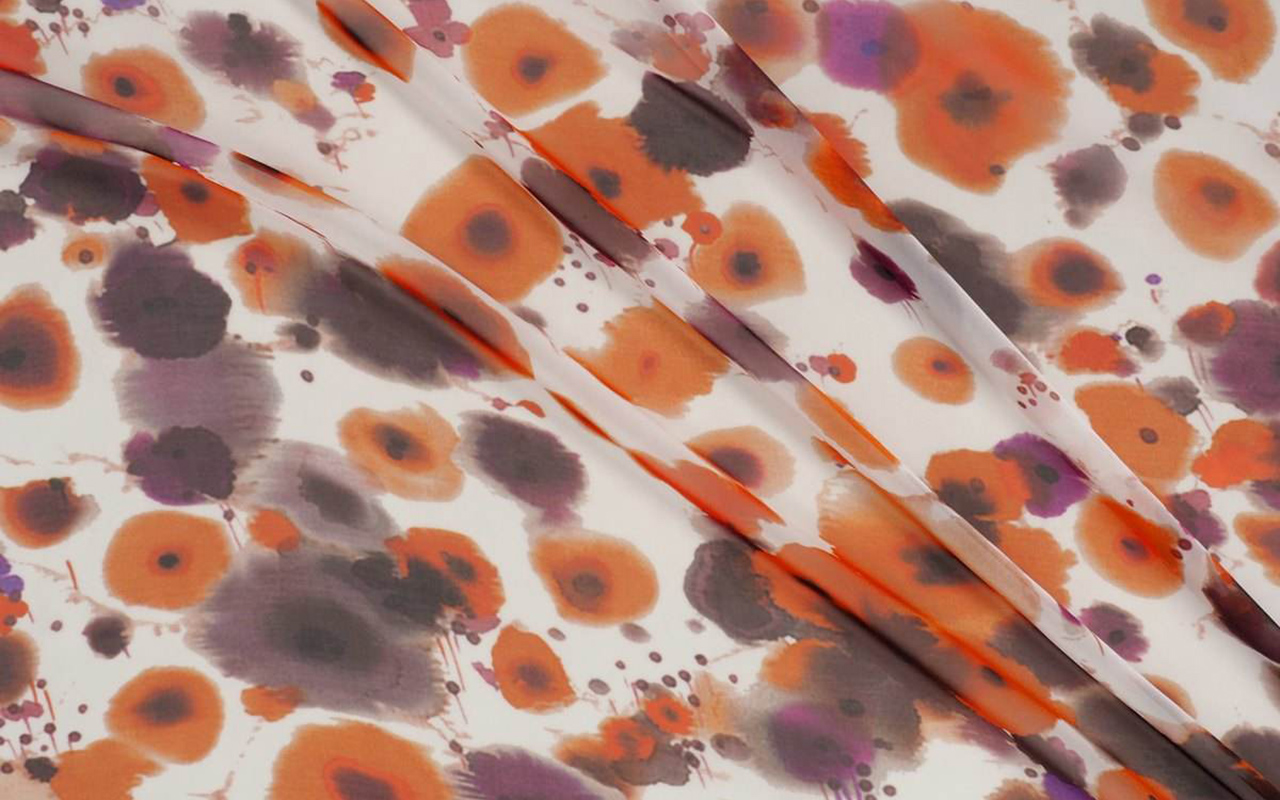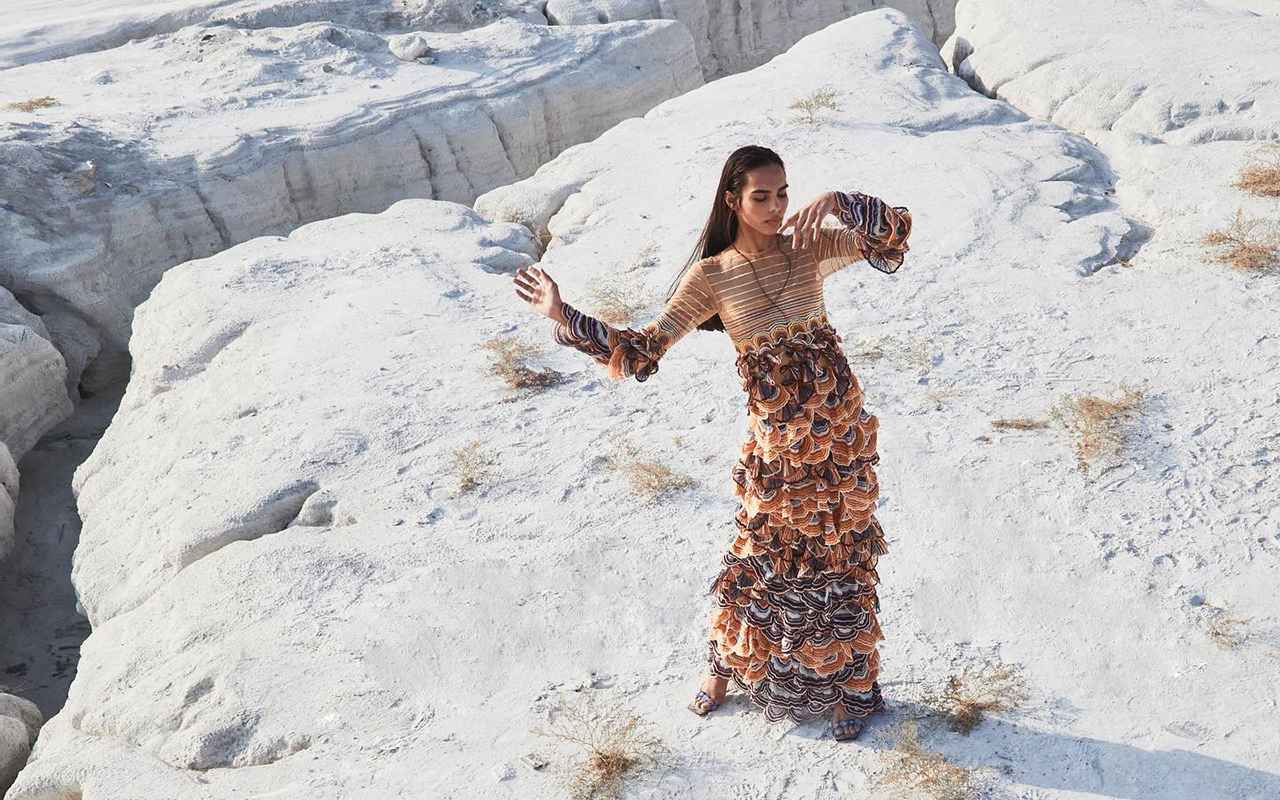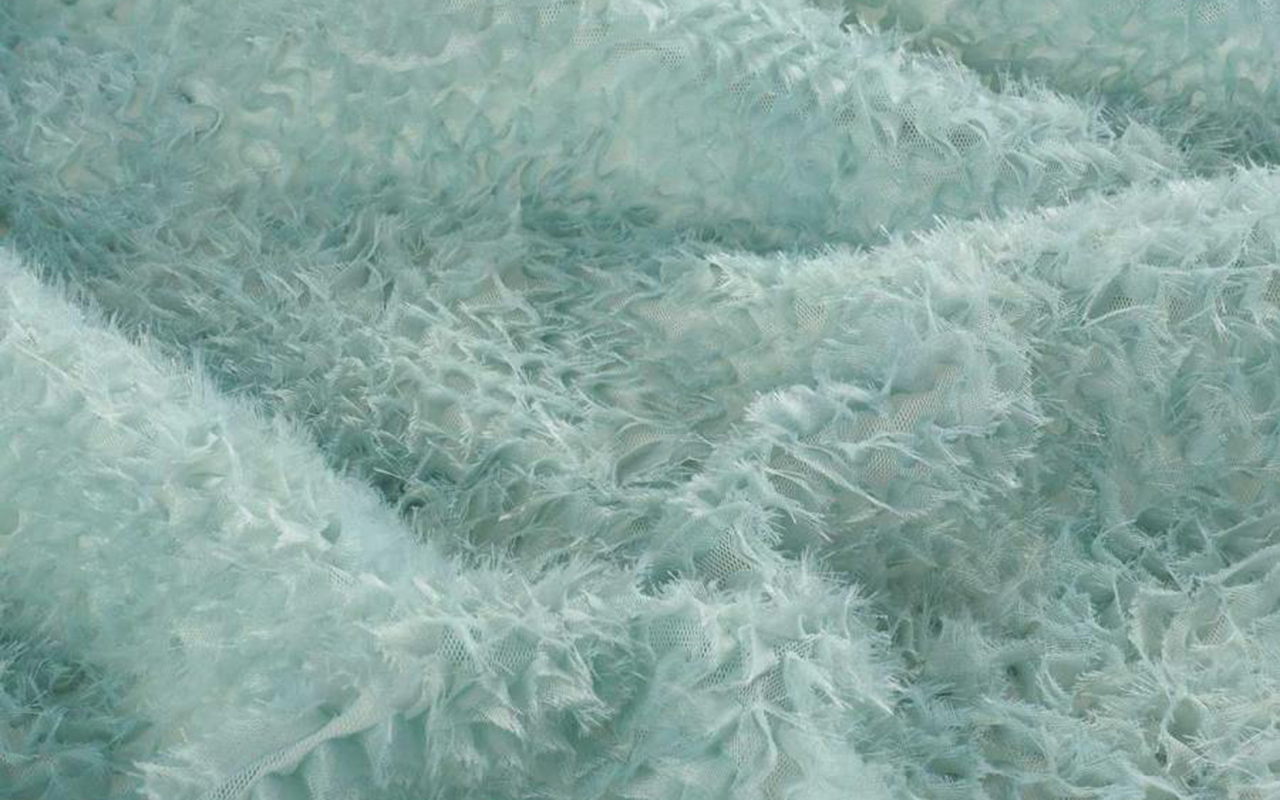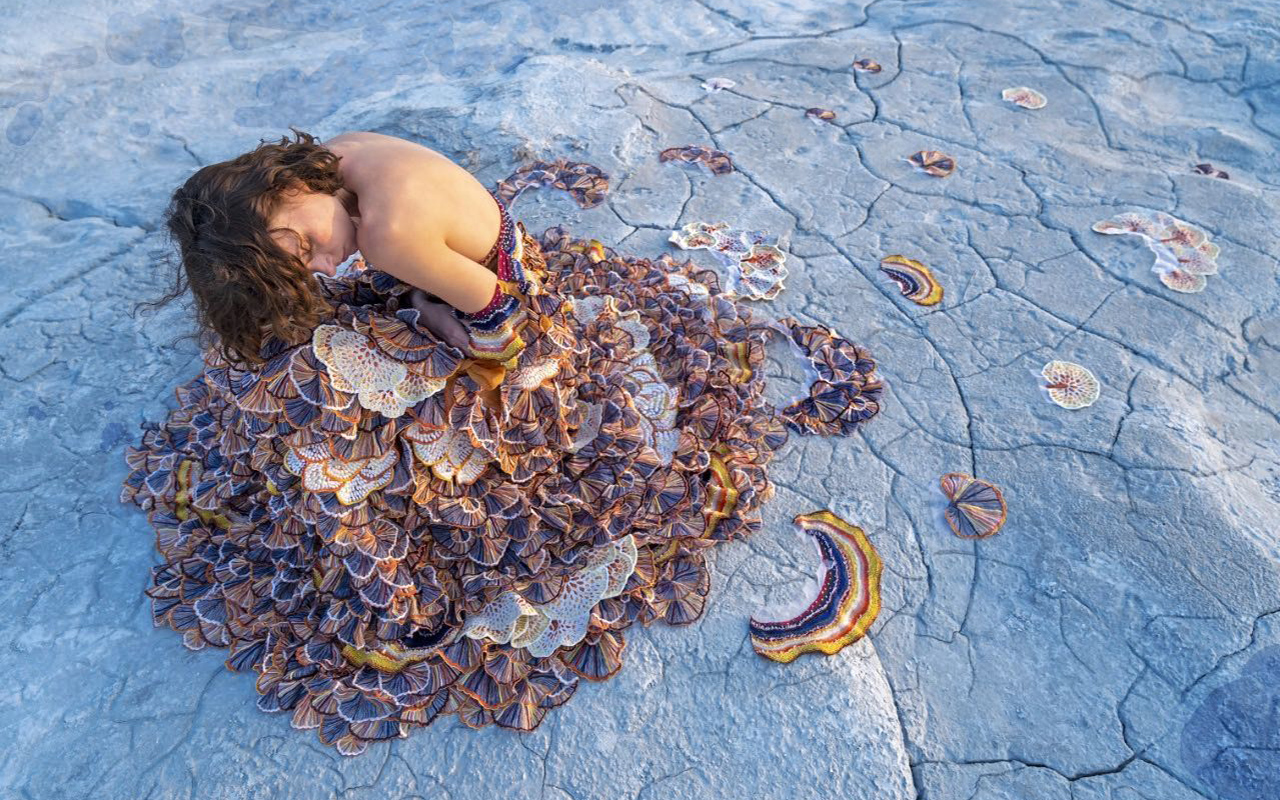 Rahul Mishra’s design from the collection “The Dawn.” Photo: Facebook
Rahul Mishra’s design from the collection “The Dawn.” Photo: Facebook
Inspiration always comes from the most unexpected places, especially in the demanding world of fashion, which is always looking for new things to surprise its consumers with. For some time now, there has been a new object of desire that generates fascination and repulsion in equal parts: mold. Yes, you read that right. Mold, that type of microscopic fungus that helps nature break down dead organic matter, is all the rage for a number of reasons.
This statement is not surprising, because in general, the world of mushrooms seduces with its imperfect aesthetics. It does so through organic forms and natural reliefs that inspire artists and creators. It also connects with a dreamlike and fantastic universe that we carry in the subconscious and that can be revealed in the form of adventures in the forest, as can be seen in books like ‘Alice in Wonderland’ or movies like Disney’s ‘Fantasy’. Mushrooms also refer to the psychedelic fever of the 1960s and 1970s, with their hallucinogenic properties that were transmitted in colourful universes that permeated everything from fashion to music and painting.
Finally, the world of mushrooms also has a sustainable dimension. Thanks to their amazing properties and exceptional versatility, mushrooms have transformed the world of fashion by offering a more conscious and environmentally friendly alternative. We analyze each aspect below:
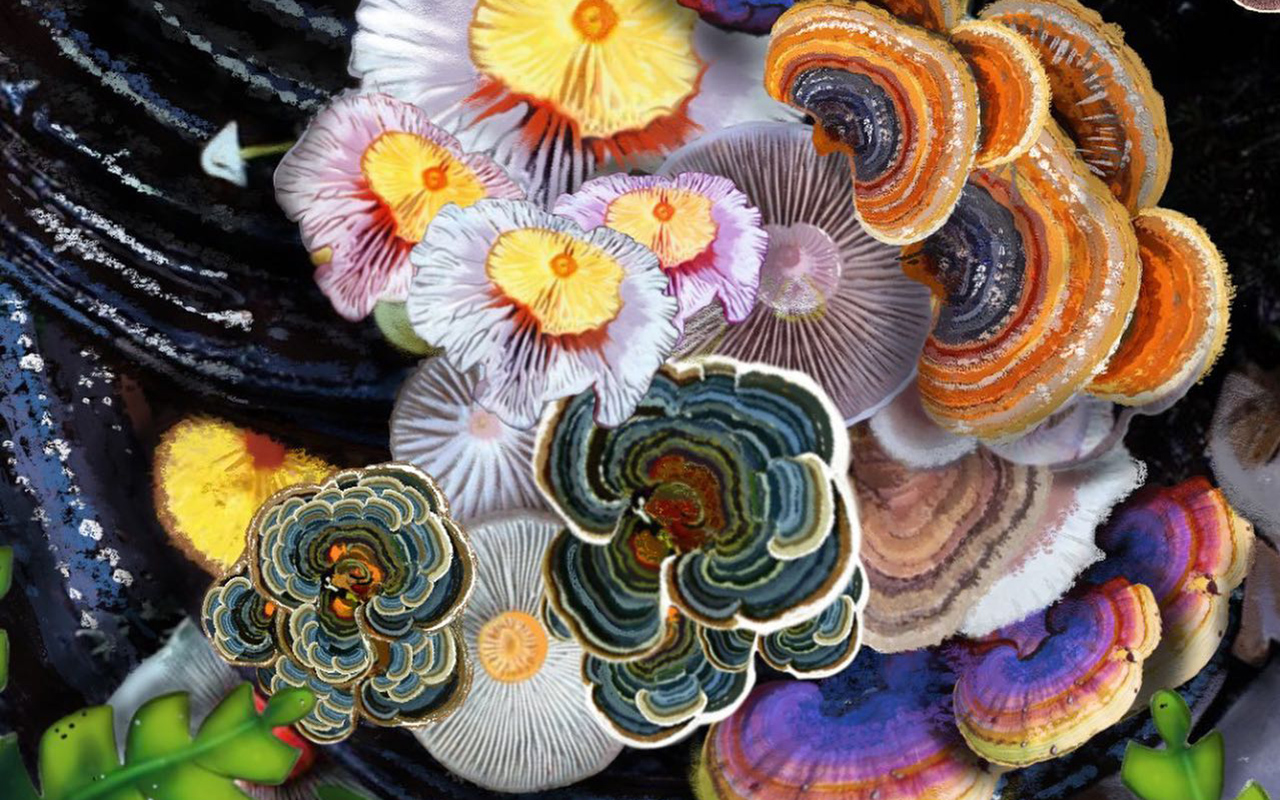 Rahul Mishra’s design inspired by mushrooms from the collection “The Dawn.” Photo: Facebook.
Rahul Mishra’s design inspired by mushrooms from the collection “The Dawn.” Photo: Facebook.
Imperfect beauty
It’s self-evident: mold, at first glance, can seem repulsive and unsightly. However, fashion designers have found in this unattractive organism a hidden beauty that manifests itself in its pastel colours, its organic reliefs and its unusual textures. These unusual and unique attributes endow you with a certain aesthetic uniqueness and, therefore, a greater ability to challenge traditional canons of beauty. In a world that seeks perfection, the beauty found in the abstraction of mold becomes a bold and liberating statement, instantly captivating because it connects with nature and the processes of life in an organism that questions and explores ideas about what it is beautiful and good, and tries to reconcile us with imperfection.
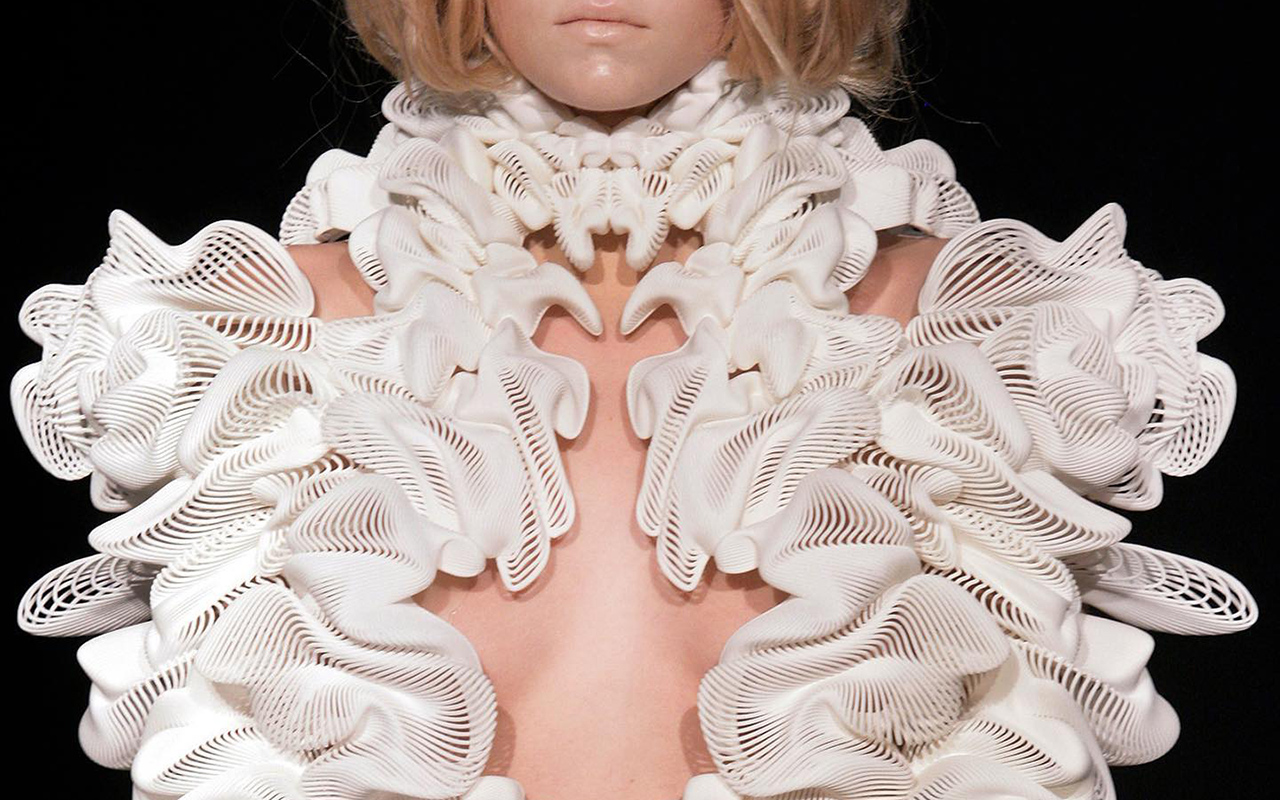 An architectural design by Iris Van Herpen. Photo: Facebook
An architectural design by Iris Van Herpen. Photo: Facebook
In the crosshairs of avant-garde designers
Fashion designers have embraced the innovative aesthetic of fungal materials, creating cutting-edge pieces that push the limits of creativity. Thus, the abstract patterns and irregular, velvety patches of mold have been translated into striking prints and embroidery on garments. Various designers have experimented with dyeing and printing techniques to create mold-like effects in their collections. In addition, the organic shapes of the mold have influenced the silhouettes and cuts of the garments, providing a sensation of fluidity and movement.
For example, Iris van Herpen has explored mold reliefs in her creations on numerous occasions, as well as the underground network and connections of fungi. Her experimental designs often feature three-dimensional structures that mimic the unique shapes and textures of these small, highly regenerative organisms.
For his part, Rahul Mishra also stands out for his sustainable approach and his use of artisan techniques. In his collections, the Indian designer has incorporated embroidery and appliqués that evoke mold relief, creating interesting visual effects and surprising textures. Known for his edgy aesthetic, Alexander McQueen has explored the world of mold in his iconic “Plato’s Atlantis” collection. The organic reliefs of the mold were translated into prints and textures on her garments, providing a sense of mystery and surrealism. Gareth Pugh has also turned to mold for inspiration, creating garments with volumes and textures that evoke his distinctive aesthetic. In addition, the French designer Marine Serre has incorporated mold into patterns and textures in garments with a futuristic and avant-garde aesthetic.
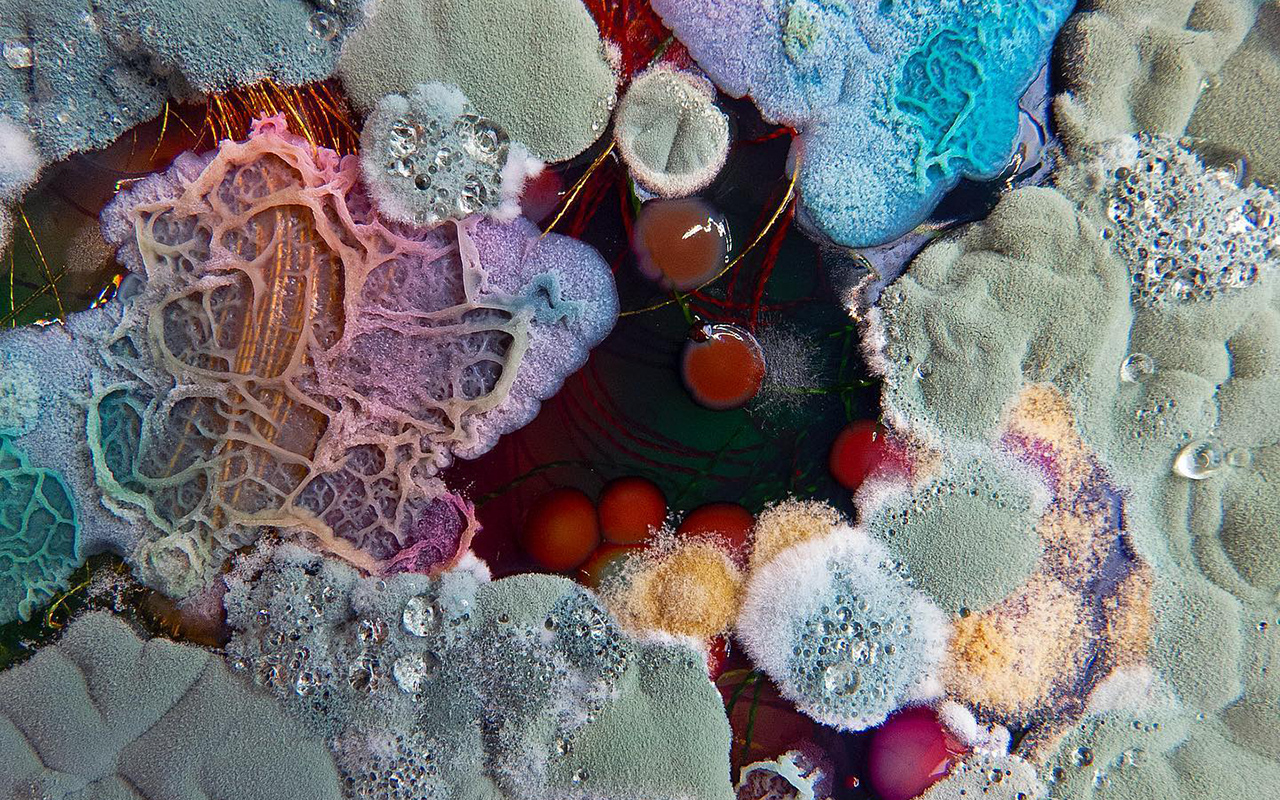 The artist Dasha Plesen works with microbiology. Photo:Facebook
The artist Dasha Plesen works with microbiology. Photo:Facebook
Applications in the beauty industry
In the beauty industry, which is always on the lookout for new trends, mushrooms have also emerged as a powerful source of inspiration and have, in turn, become active elements in beauty products, thanks to their incredible versatility and skin benefits.
Cosmetics has been one of the fields most impacted by the incursion of fungi. These organisms have moisturizing, antioxidant, anti-inflammatory, and regenerative properties, making them star ingredients in skin care products. Mushrooms, such as reishi, shiitake, and cordyceps, are used in serums, creams, and masks to provide noticeable benefits, including improving skin elasticity, reducing signs of aging, and promoting a radiant complexion.
In addition to their benefits for the skin, mushrooms have also made their mark in the world of perfumery. Some species, such as truffles and mushrooms, have characteristic and sophisticated aromas that have been used to create distinctive notes in perfumes and fragrances. These fungal ingredients bring a unique, earthy dimension to olfactory compositions, adding a sense of mystery and elegance to scented products.
The influence of these tiny living organisms has also extended into the world of creative makeup, where designers and brands have found inspiration in the hues and textures found in nature’s mushrooms. Eyeshadow palettes inspired by warm, earthy tones, nail polishes that mimic the subtle colours of wild variants, and makeup products with velvety textures that resemble mold reliefs are the order of the day.
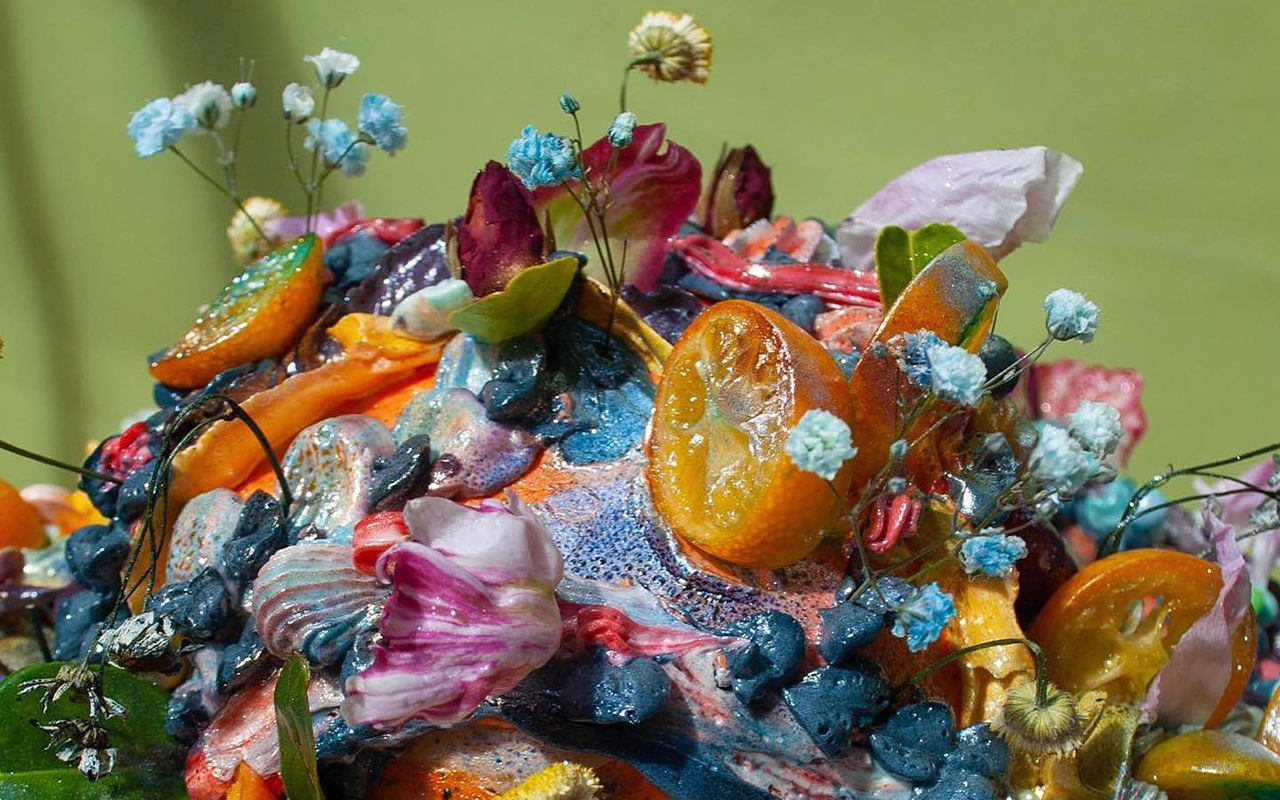 An artistic creation by the pastry company Frostedhag. Foto: Facebook
An artistic creation by the pastry company Frostedhag. Foto: Facebook
A sustainable revolution
Mushrooms offer an ethical and sustainable alternative to animal leather, as they can be grown under controlled conditions and without harming the animals. Being a renewable and biodegradable source, materials of fungal origin reduce the environmental footprint of fashion, without sacrificing luxury or quality. Materials derived from mushrooms possess unique properties that make them ideal for use in clothing. The mycelium, the fungus’ network of filaments, can be grown and manipulated to create a variety of textures, densities, and colours. Additionally, these materials are lightweight, flexible, waterproof, and breathable, making them a versatile and comfortable option for garments, accessories such as bags, and footwear.
One of the pioneers in introducing the fungal world into her creations has been Stella McCartney, who has incorporated a bag made with Mylo, a leather-like material made from mushroom roots. Later, she launched a sports outfit made from this material. But it was not the only one. Firms such as Adidas or Hermès have also begun to use biodegradable materials made with fungi that are transformed into sustainable fabrics, standing out for their softness and flexibility, offering a more conscious and environmentally friendly alternative. In addition, the ability of fungi to degrade naturally at the end of their useful life contributes to closing the materials cycle and reducing environmental impact.
For all these reasons, the mushroom revolution has only just begun and these organisms are part of the sustainable change that is taking place throughout the world of fashion. As the sector moves towards a more ethical and environmentally friendly industry, mushrooms are making a lasting mark as an innovative and promising alternative.
